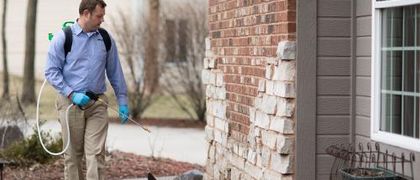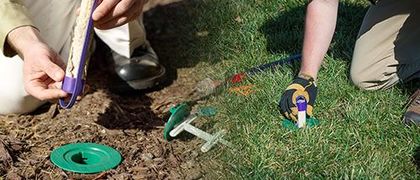What do multicolored Asian lady beetles look like?
- Size: 1/3-inch
- Color: Yellowish-orange to red coloring, variable black spots on the back (may be faint or missing), a black "W" marking on the thorax
- Body Structure: Head, thorax, and abdomen

Characteristics of multicolored Asian lady beetles
Like boxelder bugs and other occasional invaders, multicolored Asian lady beetles (MALB) are insects primarily found outdoors, but may enter homes by accident or when searching for overwintering sites.
Multicolored Asian lady beetles have four life stages: egg, larva, pupa, and adult. The eggs that lady beetles lay on host plants in early spring hatch in three to five days and then larvae start feeding on aphids and other soft-bodied arthropods they find on plants. Larvae molt four times, becoming larger after each molt and entering the immobile pupal stage after the last one. After several days adult beetles emerge from the pupal case.
When are multicolored asian lady beetles most active?
Where are multicolored Asian lady beetles commonly found?
During the spring and summer months, these plant-feeding pests that attack a variety of trees, ornamentals, and agricultural crops as they search for food. Once fall arrives, the MALB population will prepare to overwinter and start seeking out potential spots. During this time, it's very common to find these pests congregating on sunny, exposed surfaces or slipping through cracks, gaps, and openings on the exterior of homes.
What do multicolored Asian lady beetles eat?
Both adults and larvae feed on aphids and other soft-bodied insects they find on plants. They may move onto fall-ripening food if their preferred sources are depleted.
Are multicolored Asian lady beetles dangerous?
No, Multicolored Asian lady beetles are not dangerous. They do not sting or spread disease. Aside from staining light-colored surfaces with their secretions, they do not cause property damage. Although they can bite, the pain is usually mild and short-lived.
The biggest threat that comes from MALB populations is the damage they cause to plants, flowers, fruit, and other crops when they're feeding.
Why do I have a multicolored Asian lady beetle infestation?
If you've discovered Multicolored Asian lady beetles in your home, it's because they found a way in through a crack, gap, or opening on the exterior of the house. They're also attracted to sunny sides of homes and buildings that get the afternoon sun. Finally, if you have their preferred food sources on your property, they'll be apt to stick around and maybe even overwinter if given the opportunity.
How do I get rid of multicolored Asian lady beetles?
For effective pest control services that take care of multicolored Asian lady beetles, contact a licensed pest control company. At Miller Pest & Termite, we’ve been taking care of nuisance and occasional invaders since 2001 and are ready to help you solve your MALB problem!
How can I prevent a multicolored Asian lady beetle problem?
In order to prevent multicolored Asian lady beetles from congregating on your property or overwintering in your home or structure, Miller Pest & Termite recommends the following prevention tips:
- Seal gaps around doors, windows, fascia boards, and other entry points
- Repair or replace broken or torn window screens
- Keep entry doors and garage doors closed when not in use
- Install door sweeps and weather stripping
- Vacuum up multicolored Asian lady beetles and take the vacuum bag outside immediately after


Get Help Now!












